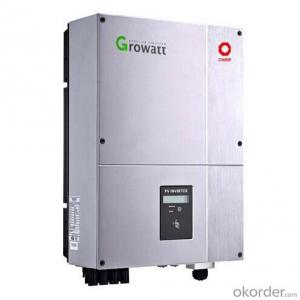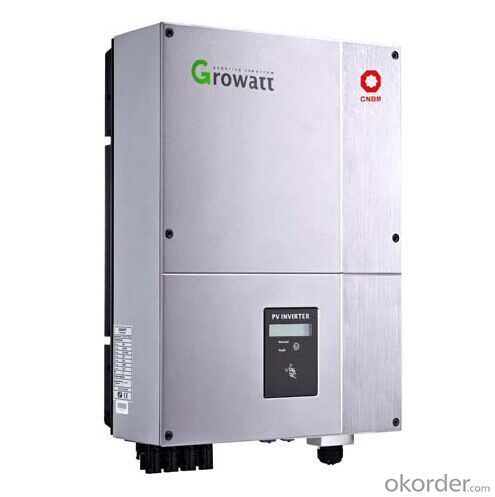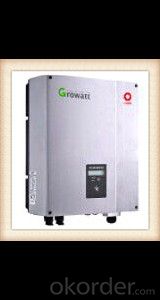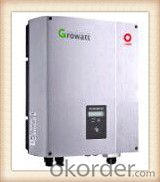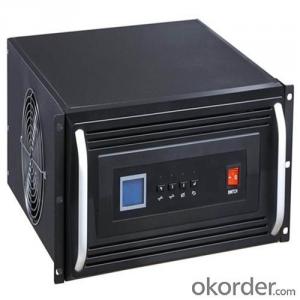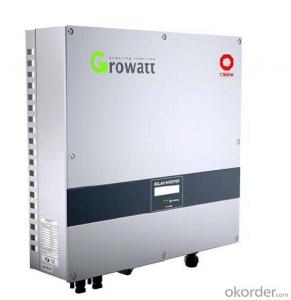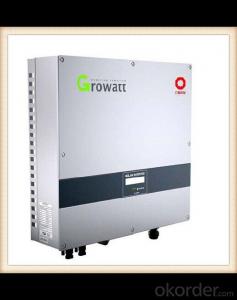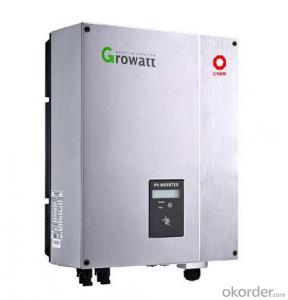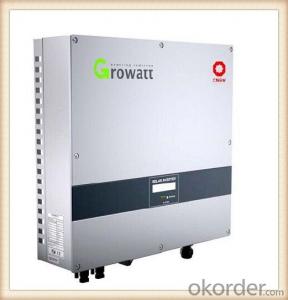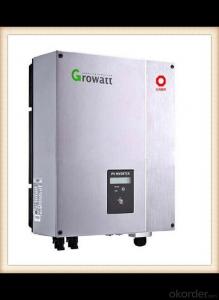CNBM-1500TL Off Grid Solar Inverter with Energy Storage Hybrid Solar Inverter
- Loading Port:
- China main port
- Payment Terms:
- TT OR LC
- Min Order Qty:
- 1000 watt
- Supply Capability:
- 100000 watt/month
OKorder Service Pledge
OKorder Financial Service
You Might Also Like
Introduction
CNBM-1000TL/1500TL/2000TL/3000TL/4000TL/4400TL/5000TL
Pure sine wave output
Microprocessor controlled to guarantee stable charging system
Multiple operations: Grid tie, Off grid, and grid tie with backup
Built-in MPPT solar charger
LCD display panel for comprehensive information
Multiple communication
Green substitution for generators
User adjustable charging current up to 25A
Maximum efficiency of 97.9% and wide
input voltage range
Wide MPPT voltage
Internal DC switch
Transformerless GT topology
Compact design
MTL – String
Multi-MPPT
Certificate: CE, VDE 0126-1-1,
DK5940, G83/1-1, G59/2, RD1663,
EN50438, VDE-AR-N4105, CEI-021,
IEC-62109, ENEL-Guide, UL1741,
UL1998, IEEE1547, CSA
Warranty: 5/10 years
Features
Maximum efficiency of 96.9% and wide input voltage range
Internal DC switch
MTL-String
Bluetooth/RF technology /wifi
Transformerless GT topology
5 years warranty(10years as optional)
Images
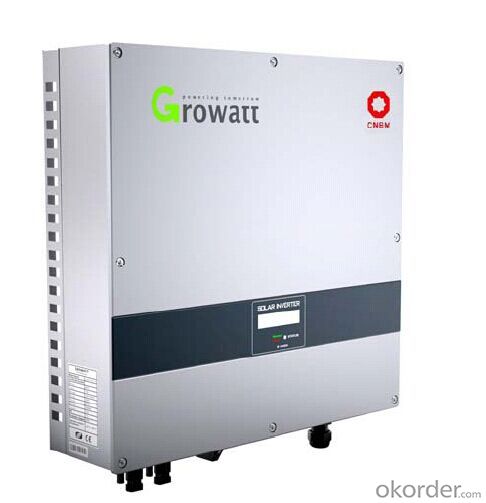
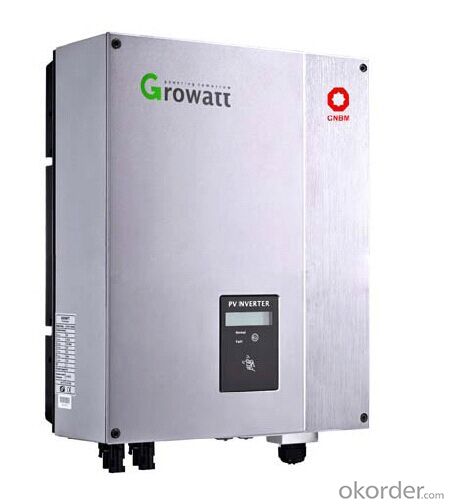
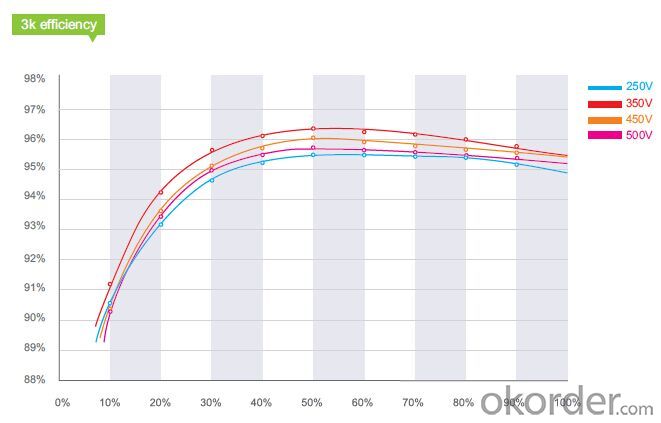
Sepecification

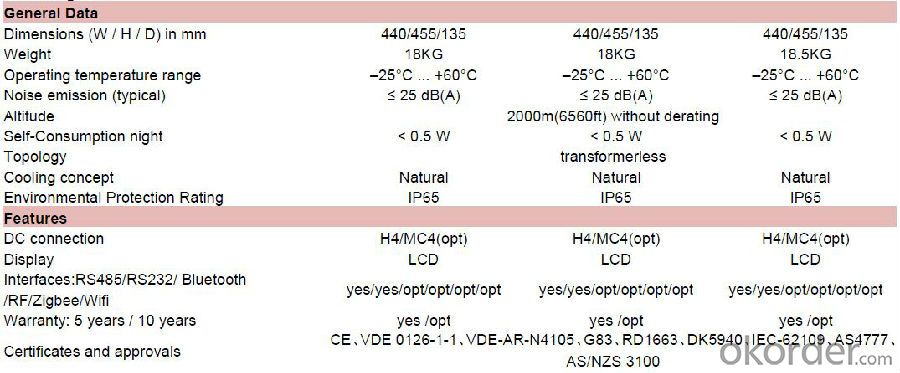
FAQ
Q1: How to choose a right inverter?
A1:Tell us your demand, then our sales will recommend a suitable inverter to you.
Q2: What's the different between inverter and solar inverter?
A2: Inverter is only accept AC input, but solar inverter not only accept AC input but also can connect with solar panel to accept PV input, it more save power.
Q3: How about the delivery time?
A3: 7 days for sample; 25 days for bulk order.
Q4: What is the warranty of inverter?
A4: 5/10 years warranty on CNBM-Solar product.
Q5: How to solve the technical problem?
A5: 24 hours after-service consultancy just for you and to make your problem to solve easily.
Q6: What is the lead time?
A6: One day after reveiving the payment.
Q7: Can I have a sample order?
A7: Yes, we welcome sample order to test and check quality. Mixed samples are acceptable.
Q8: How do you ship the goods and how long does it take arrive?
A8: Express (DHL,UPS,Fedex or TNT), Air or Sea shipment is available depends on your need. It usually takes 3-5 days to arrive except Sea transportation.
- Q: How does the harmonic distortion affect the performance of a solar inverter?
- Harmonic distortion can have a negative impact on the performance of a solar inverter. It can lead to increased heat generation, reduced efficiency, and can even cause damage to the inverter components. Additionally, harmonic distortion can introduce electrical noise into the system, which can affect the quality of the output waveform and potentially interfere with other connected devices. Therefore, minimizing harmonic distortion is important to ensure optimal performance and reliable operation of a solar inverter.
- Q: Can a solar inverter be used with different AC voltage systems?
- Yes, a solar inverter can be used with different AC voltage systems as long as it is compatible with the specific voltage range and frequency of the AC system.
- Q: Can a solar inverter be used with a solar-powered educational system?
- Yes, a solar inverter can be used with a solar-powered educational system. A solar inverter is a device that converts the direct current (DC) generated by solar panels into alternating current (AC) that can be used to power various electrical devices. In the case of a solar-powered educational system, the solar inverter would play a crucial role in converting the DC power generated by the solar panels into usable AC power for running electronic equipment such as computers, projectors, and other educational tools.
- Q: How does a solar inverter handle grid faults or disturbances?
- A solar inverter handles grid faults or disturbances by constantly monitoring the grid voltage and frequency. When a fault or disturbance is detected, the solar inverter will disconnect from the grid within a few milliseconds to ensure the safety and stability of the system. It will then enter a standby mode until the grid fault is resolved. Once the grid is back to normal, the solar inverter will reconnect and resume normal operation, providing power to the grid and maintaining synchronization.
- Q: How does the input voltage rating affect the performance of a solar inverter?
- The input voltage rating of a solar inverter directly affects its performance. The inverter is designed to convert the DC power generated by the solar panels into AC power that can be used in homes or businesses. If the input voltage exceeds the rating of the inverter, it can cause damage to the electronics and reduce its efficiency. On the other hand, if the input voltage is too low, the inverter might not be able to operate at its full capacity. Therefore, it is crucial to choose an inverter with an input voltage rating that matches the specifications of the solar panels to ensure optimal performance and longevity.
- Q: What are the key safety features to look for in a solar inverter?
- Some key safety features to look for in a solar inverter include: 1. Overvoltage and overcurrent protection: The inverter should have mechanisms in place to prevent excessive voltage or current levels, ensuring the safety of the system and connected devices. 2. Ground fault protection: This feature detects and protects against faults in the grounding system, reducing the risk of electric shock or damage to the inverter. 3. Temperature monitoring and control: The inverter should have built-in temperature sensors to monitor and regulate its internal temperature. This helps prevent overheating and potential fire hazards. 4. Arc fault detection: Arc faults can occur in electrical systems and pose significant safety risks. An inverter with arc fault detection can identify and mitigate these faults, minimizing the chance of electrical fires. 5. Rapid shutdown capability: In the case of an emergency or maintenance, the inverter should have the ability to rapidly shut down the solar system. This feature helps ensure the safety of installers, firefighters, or anyone working on the system. 6. Compliance with safety standards: Look for inverters that meet relevant safety standards, such as UL 1741, IEC 62109, or other local regulations. These standards ensure that the inverter has undergone rigorous testing and meets specific safety requirements. Overall, a solar inverter with these key safety features can help enhance the safety and reliability of a solar power system.
- Q: Can a solar inverter be repaired or serviced?
- Yes, a solar inverter can be repaired or serviced. In case of any malfunction or issues, a qualified technician can diagnose and fix the problem. Regular maintenance and servicing can also help prolong the lifespan and optimize the performance of a solar inverter.
- Q: How does a solar inverter handle sudden changes in solar irradiance?
- A solar inverter handles sudden changes in solar irradiance by constantly monitoring the input voltage and adjusting its output power accordingly. It employs maximum power point tracking (MPPT) algorithms to optimize the energy conversion from the solar panels. When there is a sudden increase or decrease in solar irradiance, the inverter quickly adapts by regulating the voltage and current to maintain a stable and efficient output. This ensures that the generated solar power is effectively utilized and protects the system from potential damage caused by voltage fluctuations.
- Q: What is the maximum AC output current that a solar inverter can provide?
- The maximum AC output current that a solar inverter can provide depends on its specifications and capacity. Different models and brands may have varying maximum AC output current ratings, typically ranging from a few amps to several hundred amps. It is important to consult the specific technical specifications of a particular solar inverter to determine its maximum AC output current capacity.
- Q: What is the role of a power control feature in a solar inverter?
- The role of a power control feature in a solar inverter is to efficiently manage and optimize the power output generated by the solar panels. It helps regulate the flow of electricity, maintaining a stable voltage and frequency, while also ensuring that the maximum power point tracking (MPPT) is achieved. This feature allows for better performance, increased energy production, and the ability to adapt to changing sunlight conditions, ultimately maximizing the overall efficiency of the solar inverter system.
Send your message to us
CNBM-1500TL Off Grid Solar Inverter with Energy Storage Hybrid Solar Inverter
- Loading Port:
- China main port
- Payment Terms:
- TT OR LC
- Min Order Qty:
- 1000 watt
- Supply Capability:
- 100000 watt/month
OKorder Service Pledge
OKorder Financial Service
Similar products
Hot products
Hot Searches
Related keywords
